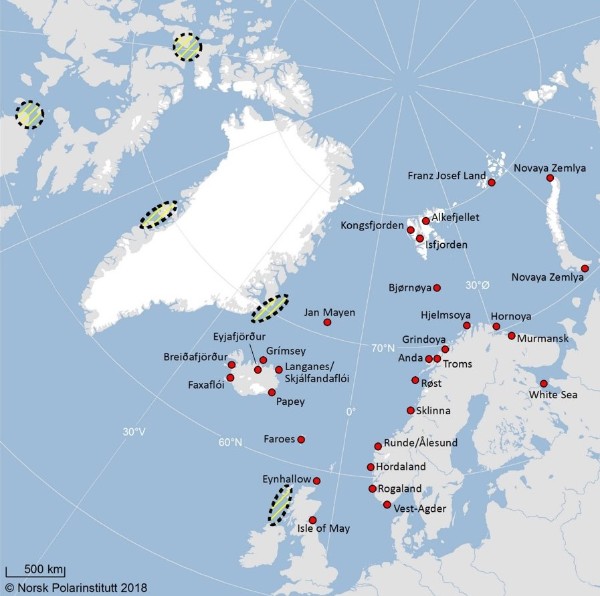SEATRACK moves into a second phase
SEATRACK was recently granted funding to continue the mapping of seabird movements for four more years. This means that the programme now enters phase II, which will last through 2022 and involve, among other things, the inclusion of new colonies in the west and a pilot study of new tracking technology.
A success story
SEATRACK was launched in spring 2014 with financial support from the Norwegian Ministry of Climate and Environment (KLD), the Ministry of Foreign Affairs (UD) and the oil industry. Over the last five years, SEATRACK has collected position data outside the breeding season for more than 2 700 individual seabirds of eleven different species from colonies in the Barents Sea and the North Atlantic Ocean. The data has provided brand new and revolutionary insights into seabird movement patterns and contributed to the publishing of a long range of scientific reports and articles. Knowledge concerning dispersal routes and wintering areas of seabirds is important for management and offshore industry. As such, KLD and The Norwegian Oil and Gas Association agreed to finance SEATRACK for four new years. Other financers are also the Norwegian Coastal Administration and eight operating companies within the oil industry – Equinor, Lundin, Wintershall, Total E&P, ConocoPhillips, Spirit Energy, Aker BP and Neptune Energy.
Improving data quality
Over the next four years, SEATRACK will first and foremost work on improving the quality of the data collected through the programme. By including new colonies and increasing the data sampling at sites where few data have been collected so far, SEATRACK will the increase sample size and the representativeness of the data. The new colonies that will be incorporated in the programme are located on Greenland, the British Isles and in Canada. There are also plans for a pilot study using tiny GPS loggers to increase data precision and give detailed knowledge about seabird migration around the spring and autumn equinoxes and in times of constant daylight or constant darkness – periods for which light loggers (GLS) cannot produce reliable position data. In the longer term, the aim is to replace light loggers with GPS loggers as the tool for collecting position data throughout the SEATRACK programme.
Movements of the juveniles to be revealed
There are also large gaps in our knowledge about the life and movements of young seabirds during their first years before they return to the colony to breed for the first time. SEATRACK seeks to fill these gaps by deploying loggers on juvenile birds. In a trial period, this will be limited to a few chosen species in a small number of colonies.
Contact person: Hallvard Strøm, Norwegian Polar Institute
Front page photo: Valère Marsaudon

Map: SEATRACK

Photo: Marion Lexau Nødset